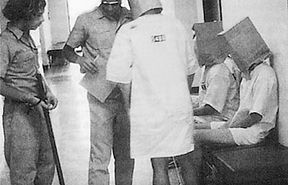top of page

Stanford.
Facts:
-
The Public Management Program (PMP), was the first program of its kind at an American business school.
-
Jim Thompson, long time PMP director, jumped out of the bandwagon to create his own social enterprise, Positive Coaching Alliance.
-
The Alumni Consulting Team has served 448 nonprofit organizations to date.
-
The Center for Social Innovation (CSI) podcasts have been downloaded over 2 million times by social innovators from all over the world.
-
The Center supports five social innovation fellows.
-
The Center’s executive education programs educated over 1,500 nonprofit and philanthropy leaders.
-
Dean Arjay Miller agreed to become the dean of the Stanford Graduate School of Business on the condition that he could create the Public Management Program.
-
Dean Joss sang in a band to help sponsor Stanford GSB interns in social purpose organizations.
-
The new Knight Management Center is Leed Platinium Certified.
Scholarsships:
-
Sweet & Simple.
-
Dr. Pepper Million Dollar Give Away.
-
American Fire Sprinkler Association Scholarship Program.
-
Dunkin Donut Scholarships.
-
Scholarships.com.
-
Fastweb.com.
-
Scholarshipsexperts.com.
-
Collegescholarships.com.
-
Finaid.org/scholarships.
-
Slugbooks.com
Back ups:
-
Duke University.
-
NorthWestern University.
-
NorthEastern University.
-
Community College.
Tips&Tricks:
-
Play sports.
-
Try to create a company of your own.
-
Be independent.
-
Try to get an alumni admission interview.
-
Send an email once a month if you have something important to share.
-
Be passionate.
-
Write your essay on something interesting.
Sample Essay's:
Stamford Prison:
-
The Stanford prison experiment (SPE) was a study of the psychological effects of becoming a prisoner or prison guard. The experiment was conducted at Stanford Universityon August 14–20, 1971, by a team of researchers led by psychology professor Philip Zimbardo.
-
Twenty-four male students were selected, from an initial pool of seventy-five, to adopt randomly assigned roles of prisoner and guard, in a mock prison, situated in the basement of the Stanford Psychology Department building, for a period of between seven and fourteen days. The participants adapted to their roles well beyond Zimbardo's expectations, as the guards enforced authoritarian measures and ultimately subjected some of the prisoners to psychological torture. Many of the prisoners passively accepted psychological abuse and, at the request of the guards, readily harassed other prisoners who attempted to prevent it.
-
The experiment even affected Zimbardo himself, who, in his role as thesuperintendent, permitted the abuse to continue. Two of the prisoners quit the experiment early, and the entire experiment was abruptly stopped after only six days, to an extent because of the objections of Christina Maslach. Certain portions of the experiment were filmed, and excerpts of footage are publicly available.
-
The researchers held an orientation session for guards the day before the experiment, during which they instructed them not to physically harm the prisoners. In the footage of the study, Zimbardo can be seen talking to the guards: "You can create in the prisoners feelings of boredom, a sense of fear to some degree, you can create a notion of arbitrariness that their life is totally controlled by us, by the system, you, me, and they'll have no privacy ... We're going to take away their individuality in various ways. In general what all this leads to is a sense of powerlessness. That is, in this situation we'll have all the power and they'll have none."
-
On August 20, 1971, Zimbardo announced the end of the experiment to the participants. The results of the experiment have been argued to demonstrate the impressionability and obedience of people when provided with a legitimizing ideology and social and institutional support.





Be Alright. - Justin Bieber.
00:00 / 00:00
bottom of page


